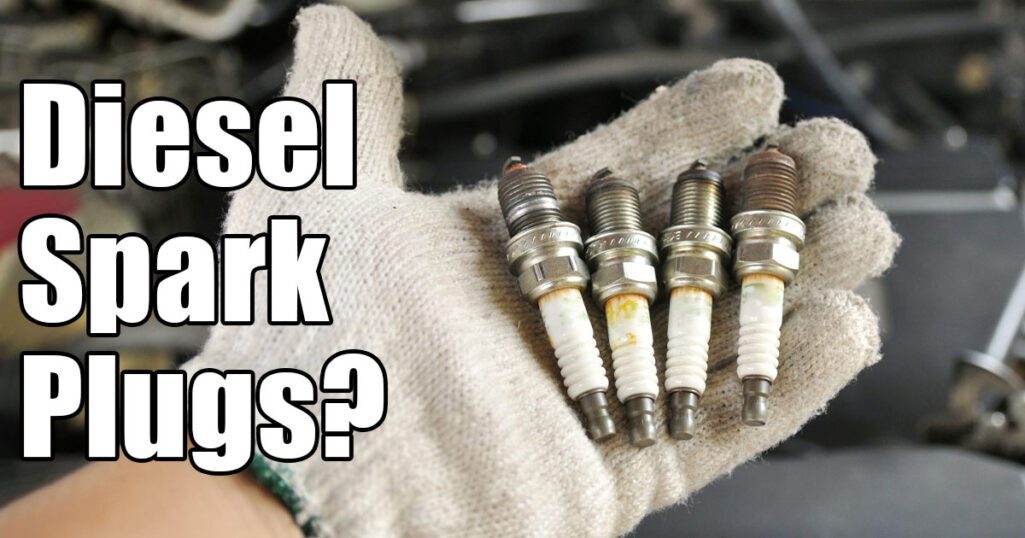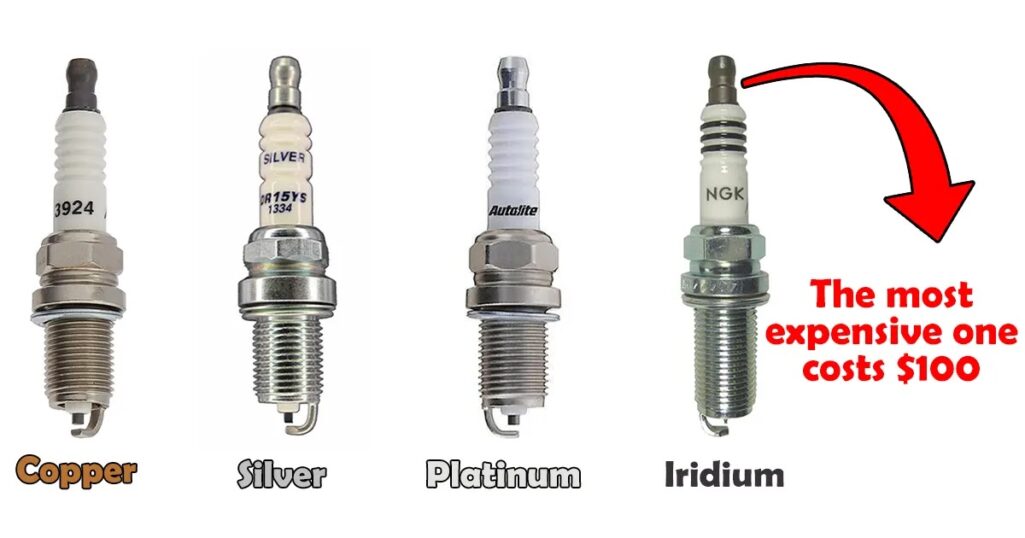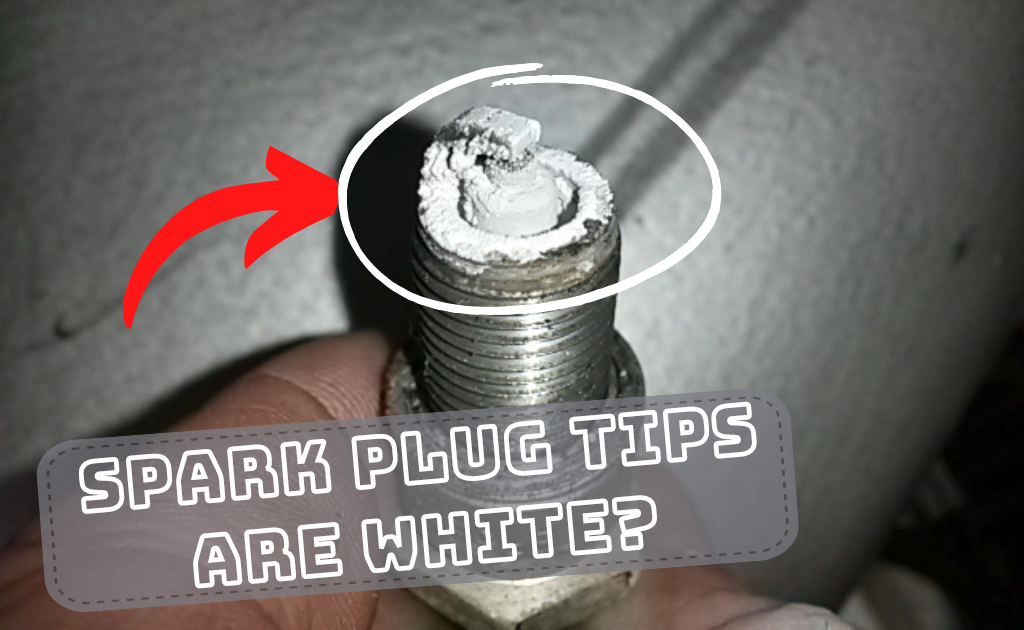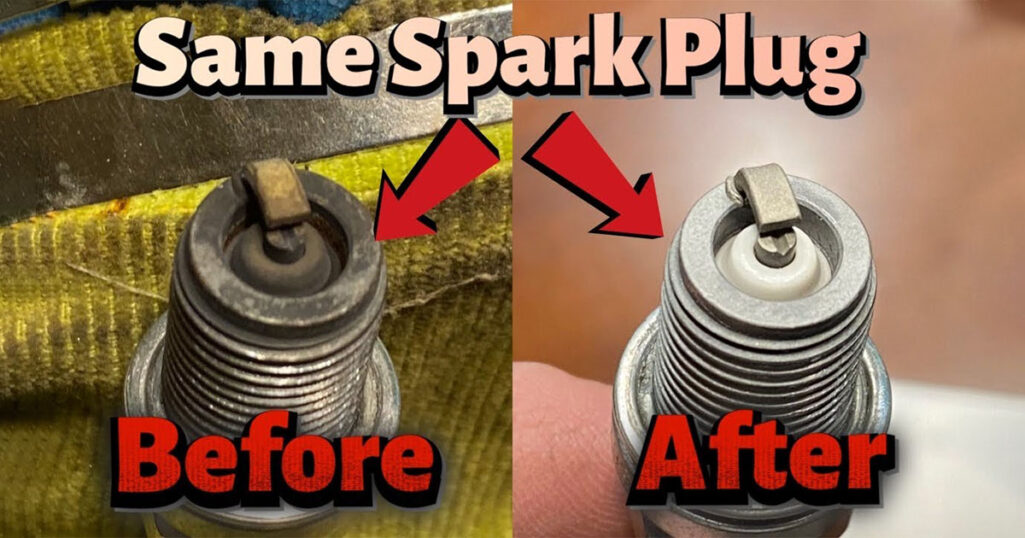
Spark plugs are critical to the smooth operation of a petrol engine. This means that maintaining clean plugs is essential if you want to get the best performance out of your engine.
Cleaning is the best approach to extend the life of your equipment and avoid unnecessary replacements. Knowing when spark plugs need to be cleaned is also an important point.
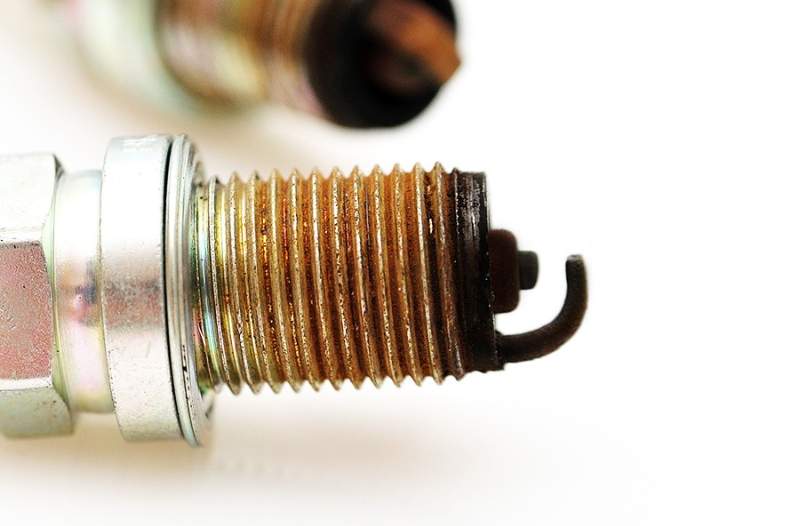
Old and unclean spark plugs should typically be replaced. But if you don’t have the money to buy new ones, what do you do? A simple cleaning job could be sufficient and can restore your vehicle’s performance for a few more thousand kilometers.
Remove the Spark Plugs
Firstly, trace the ignition coil or spark plug wire to find your spark plugs. If you’re having trouble locating your vehicle’s spark plugs, go to your owner handbook for a step-by-step guide provided by the manufacturer.
Clean the area around the spark plugs after you find them to avoid dirt and debris from falling into the plug holes when you remove the plugs. Ideally, I recommend using compressed air to remove the dirt and debris.
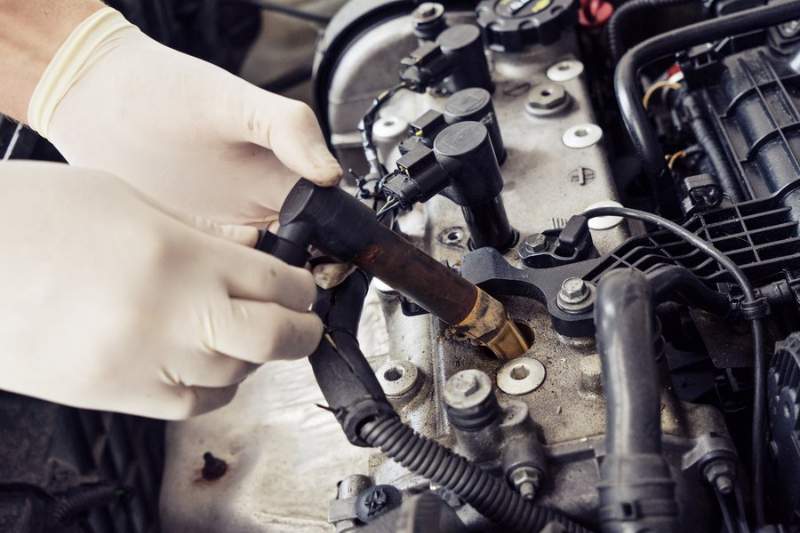
In the process of removing the spark plugs, it is possible that dirt or debris can fall into the holes and do severe damage to the engine. Always wear eye protection while using compressed air to remove debris.
To minimize engine stalling/backfiring and reduce the possibility of things falling into the plug holes, remove each plug wire one at a time. This will also assist you in putting the spark plug wires correctly.
Hold the low boot securely and carefully pull the high tension wire out while removing it. You can loosen up a tight cable by gripping it firmly then twisting it a little.

Set up an extension and a ratchet handle to work on your vehicle’s spark plugs. Unscrew the spark plug by inserting the plug socket into the spark plug hole, turning it counterclockwise, and then freely rotating with your hand.
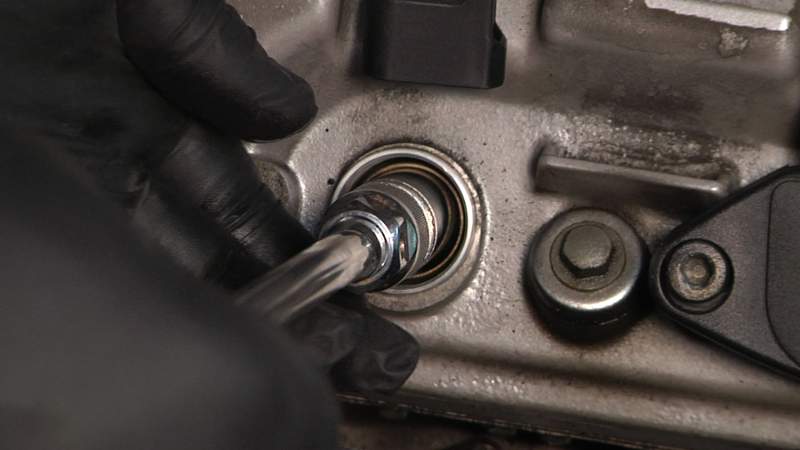
When removing spark plugs from sockets, the rubber grommets on the sockets help to keep the plugs in place and prevent them from slipping out. Keep an eye out for debris when removing the spark plugs and blow it out to keep it out of the cylinder head.
Spark Plugs Cleaning Methods
Spark plug cleaning is a mechanical process that even the most inexperienced mechanics can master. Regardless, cleaning spark plugs may be accomplished in a variety of ways.
After removing the spark plugs, start with the cleaning process using one of the 3 following cleaning methods:
Method 1: Cleaning With Sandpaper
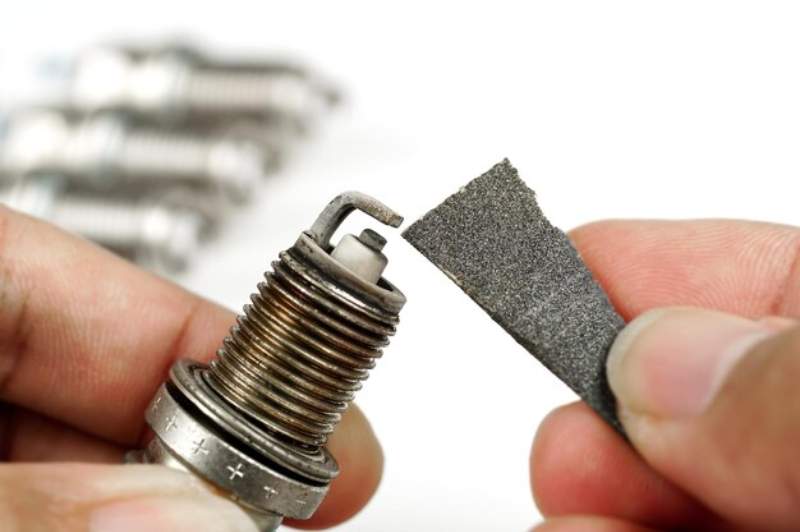
Use sandpaper with a 220-grit grain to clean the electrodes. To the end of every spark plug is a tiny pole (the part that goes into the engine). An electrode is what we’d call it. You can use a piece of sandpaper to remove any carbon deposits or stains from the surface.
Electrodes need to be cleaned until they seem to be made up of bare metal. While sanding, it is a good idea to use eye protection. Using sandpaper as a spark plug cleaning is one of the greatest options available.
Method 2: Cleaning With File
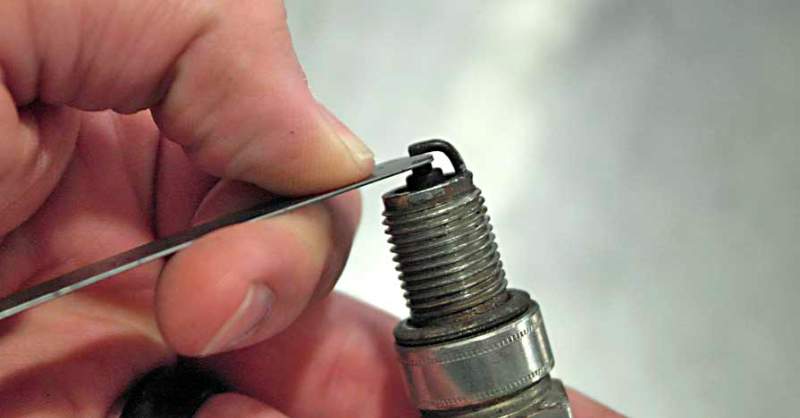
Use a file to remove the carbon buildup. If sandpaper doesn’t work, attempt using a file to remove the persistent deposits. Slide the file back and forth across the space between the plug body and the electrode.
Method 3: Cleaning With Wire Brush

Use a wire brush to remove any debris from the threads. There is a good likelihood that you have dirt and oil on the plug threads. It is a sign of oil in the spark plug holes if there is oil on the threads.
Installing new spark plugs requires that the spark plug holes be cleaned. Using multiple angles, gently brush the threads of the plugs to remove any remaining deposits and dirt.
When using a wire brush to clean plugs, use gloves to protect yourself from being injured. Even though the thread loses its color, it will still work if all the deposits are removed.
Method 4: Cleaning With Carb Cleaner
Auto shops and internet retailers all sell carb cleaners. As an inexperienced technician, you may question how to clean spark plugs with a carb cleaner.
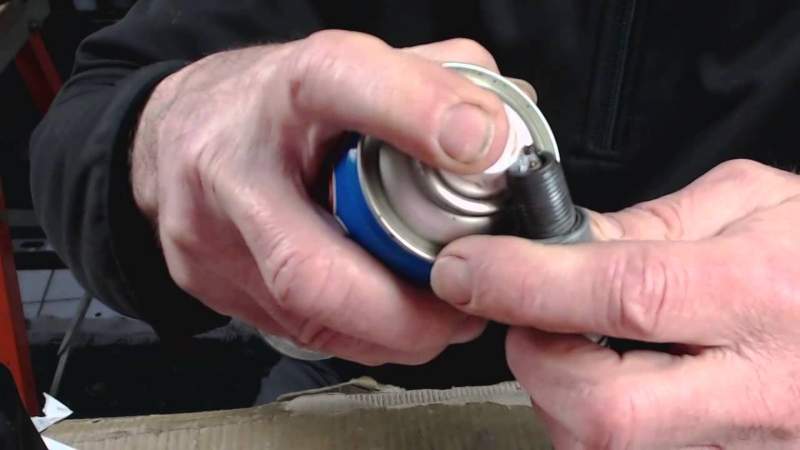
Carb cleaners are the best to effectively remove carbon deposits, buildup, dirt, and other debris from a wide range of automotive components. The spark plug should be held in a vice-like position, and the carb cleaner sprayed on it to clean it.
Wipe the surface with a clean cloth after using the cleaner. In addition to cleaning, it dries fast, leaving you with spark plugs that are free of contaminants.

If the carbon deposits are tough to remove, try using a wire brush in conjunction with a carb cleaner. When you’re finished, use a clean cloth or rag to remove any remaining carb cleaner from the plug.
It is the same process if you’re curious about cleaning spark plugs with vinegar or petrol. With a wire brush, remove the carbon deposits from the plugs and soak the plugs in vinegar or petrol for a few seconds to remove the accumulated carbon deposits.
Method 5: Using Blow Torch
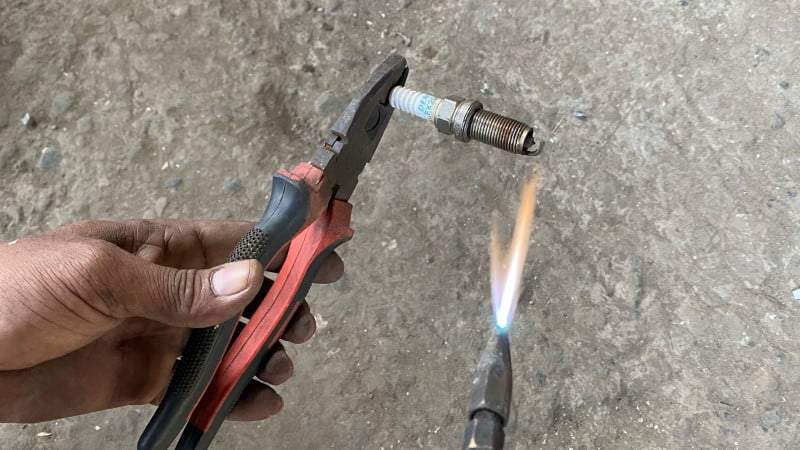
Spark plugs will get incredibly hot if you use a blow torch. Because of this, you’ll need to use a plier to extend the length of the plugs to avoid burning your hand.
Using pliers, grasp the plugs’ ends connected to the ignition coil. To avoid damaging the plug, be sure to hold it firmly but avoid squeezing it. The plier should merely serve as an extension of your hand.
Place the ignition side of the plug in front of the nozzle and press the ignition button. To produce blue flames, increase the intensity of the torch.
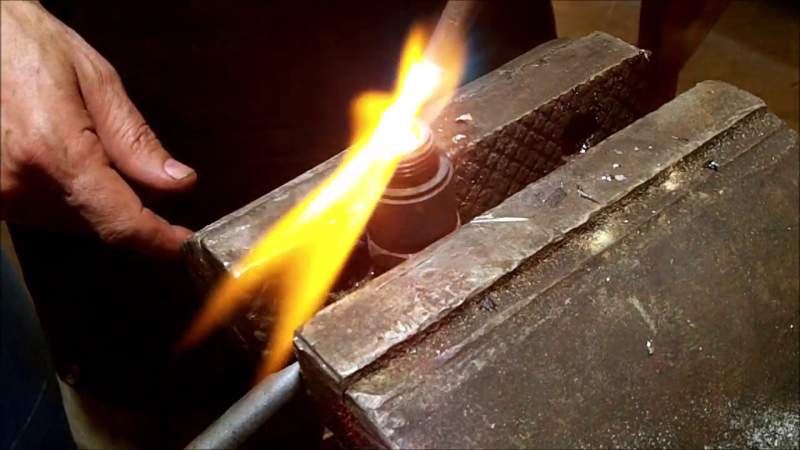
Using a light touch on the spark plugs will remove all the dirt, debris, and oil. Do not be concerned about the plugs being damaged; they will withstand the heat without any problems. The end of the spark plug should start glowing red at this point.
Stay focused, and don’t let the torch burn anything else (burn only the threaded portion of the plugs). Depending on the intensity of your torch, the burning process may take several minutes.
Before handling the spark plugs, let them cool completely. Before utilizing the plugs, they must be cooled down. With a blow torch, you must be careful since the color of the spark plugs will return to their normal state long before it cools.
It’s best to let each plug sit for five minutes before attempting to reinsert it to avoid burning your fingers. Before going on to the next one, make sure the spark plug is cold and reinstalled with the ignition coils or high tension wire. Keep going until you’ve cleaned them all. Don’t clean one and leave the rest.
Method 6: Using Spark Plug Cleaner Machine
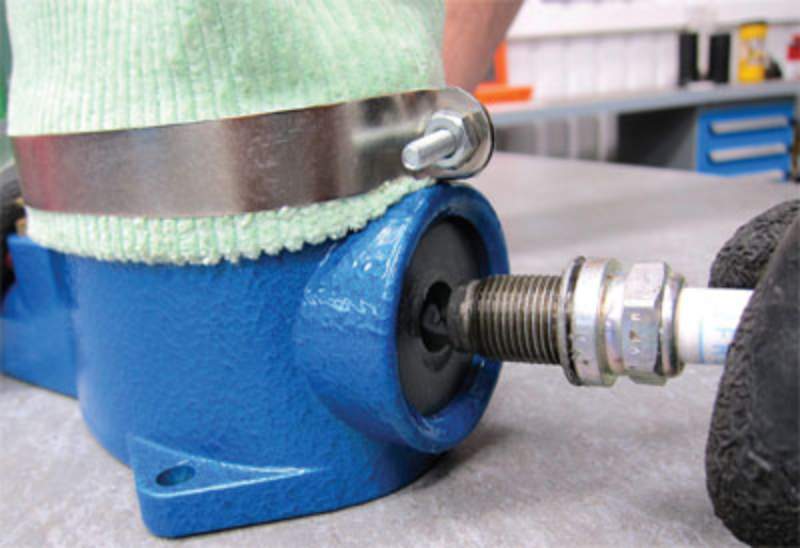
The use of a spark plug cleaning machine has also been shown to be an effective means of cleaning spark plugs. The spark plugs are sandblasted with the cleaner tool, which uses compressed air to do the cleaning.
Activate the machine by pressing the button on it, and then plug in the spark plug and switch to sandblasting mode. Make sure to shake the plug constantly so that the cleaning tool can remove all of the carbon from it.
Turn the machine to air and blow off the debris on the plug once you’ve finished blasting. The spark plugs should still be blown out using an air supply because the last thing you want to is debris falling into your cylinders.
Other Recommendations
Clean the spark plug holes if you find oil on the plug wires while cleaning or replacing old spark plugs for effective operation.
When you clean or replace an old spark plug, you’ll also need to check out the spark plug wires. If you find any breaks in the wires, then you will have to replace the damaged cable; otherwise, you will continue to have the same issues.
By now, you should have a good understanding of how to properly clean spark plugs. It’s easy, quick, and available to anybody.

